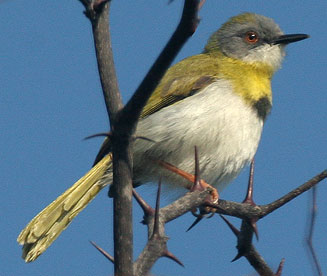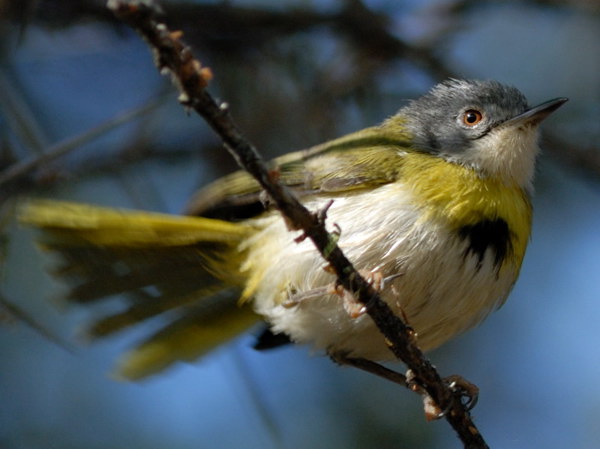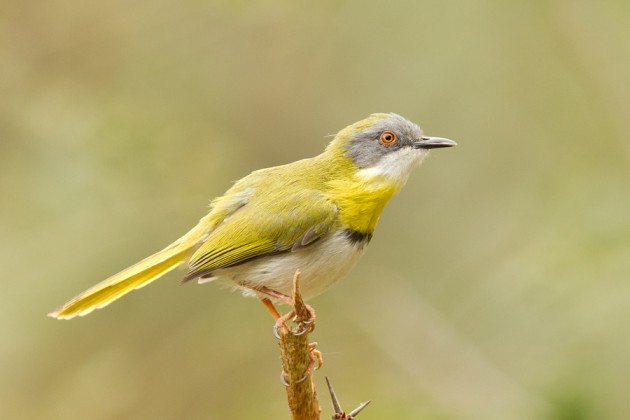
Apalis flavida
SUBFAMILY
Sylviinae
TAXONOMY
Apalis flavida Strickland, 1852.
OTHER COMMON NAMES
English: Brown-tailed apalis; French: Apalis а gorge jaune;
German: Gelbbrust-Feinsдnger; Spanish: Apalis de Pecho
Amarillo.
PHYSICAL CHARACTERISTICS
4.7–5.1 in (12–13 cm); 0.3 oz (7–9.5 g). Small warbler, olivegreen
above, whitish throat and belly separated by broad yellow
breast band, with a central black marking in some
populations. Tail long and graduated, wings short and
rounded. Gray on crown and sides of face.
DISTRIBUTION
Endemic to sub-Saharan Africa.
HABITAT
Savanna, forest edge, riparian forest and thickets.
BEHAVIOR
Often in pairs or family groups. Male song individually distinctive.
Pairs sing duets. Maintain year-round feeding territories.
FEEDING ECOLOGY AND DIET
Forages in foliage of trees and thickets. Takes a variety of insects,
insect larvae, spiders, and also fruit and nectar. Sometimes
joins mixed-species foraging parties.
REPRODUCTIVE BIOLOGY
Nest is a hanging, domed bag with side-top entrance, constructed
largely of lichen bound with spider silk, 3–6 ft (1–2 m)
above ground. Two to three eggs incubated 12–14 days by the
female; the young, fed by both sexes, fledge after 15–16 days.
CONSERVATION STATUS
Not threatened.
SIGNIFICANCE TO HUMANS
None known.
Photo Gallery of - Yellow-breasted apalis




 Animalia Life
Animalia Life